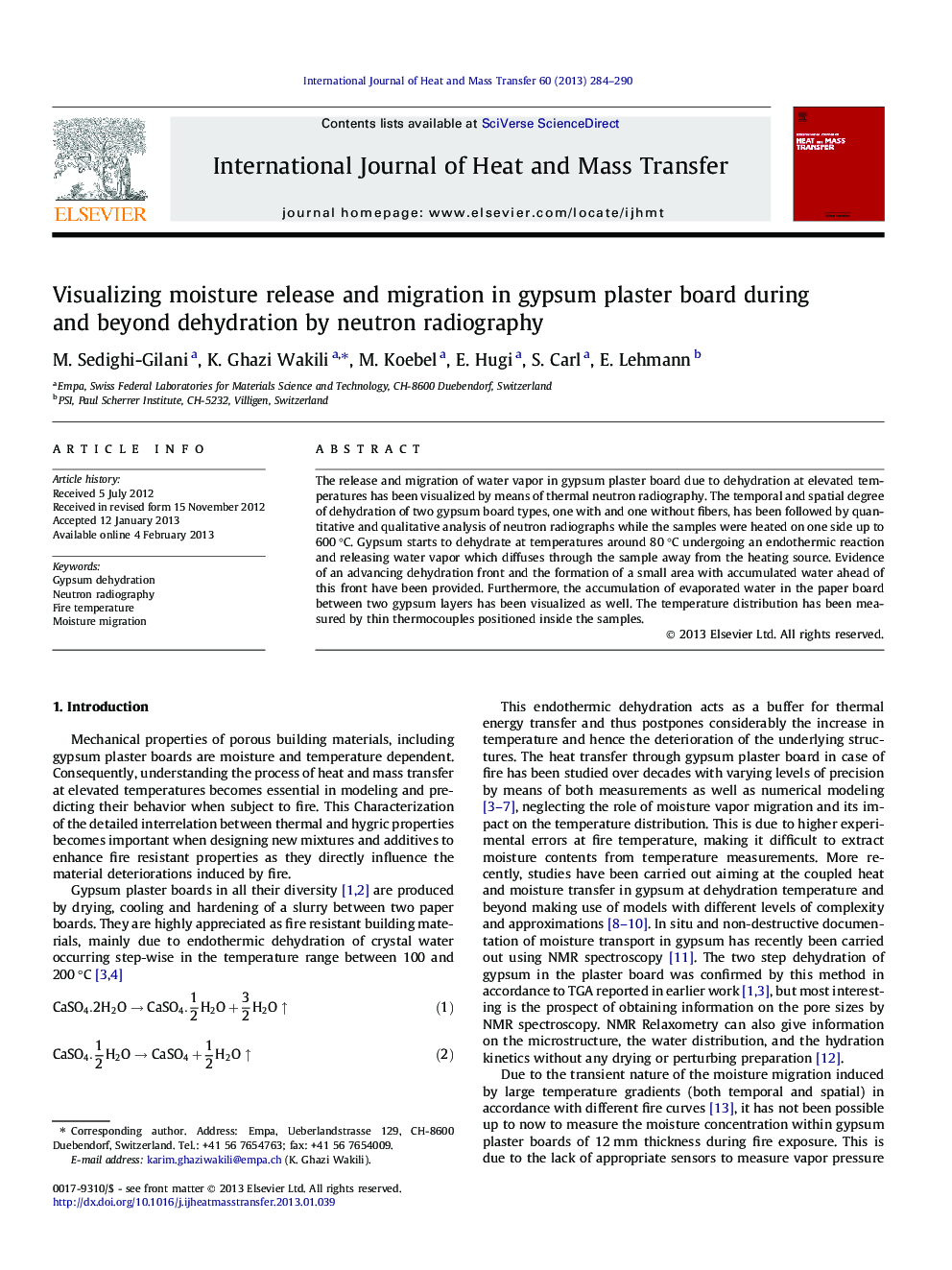| Article ID | Journal | Published Year | Pages | File Type |
|---|---|---|---|---|
| 658301 | International Journal of Heat and Mass Transfer | 2013 | 7 Pages |
The release and migration of water vapor in gypsum plaster board due to dehydration at elevated temperatures has been visualized by means of thermal neutron radiography. The temporal and spatial degree of dehydration of two gypsum board types, one with and one without fibers, has been followed by quantitative and qualitative analysis of neutron radiographs while the samples were heated on one side up to 600 °C. Gypsum starts to dehydrate at temperatures around 80 °C undergoing an endothermic reaction and releasing water vapor which diffuses through the sample away from the heating source. Evidence of an advancing dehydration front and the formation of a small area with accumulated water ahead of this front have been provided. Furthermore, the accumulation of evaporated water in the paper board between two gypsum layers has been visualized as well. The temperature distribution has been measured by thin thermocouples positioned inside the samples.
Graphical abstractScanning electron microscopy at 300x of the pore structure in gypsum plaster board with fibers on left and documented change in total mass with neutron radiography on right, after 20 min heating of the same gypsum type in double layers configuration.Figure optionsDownload full-size imageDownload as PowerPoint slide
